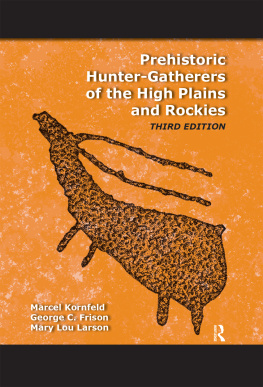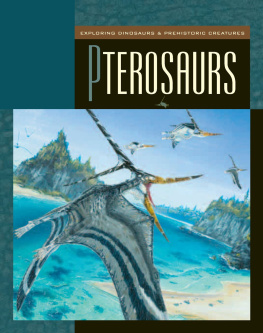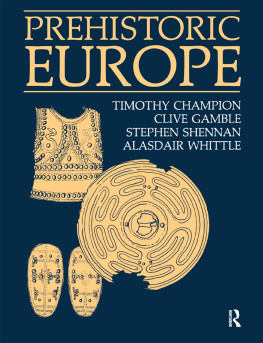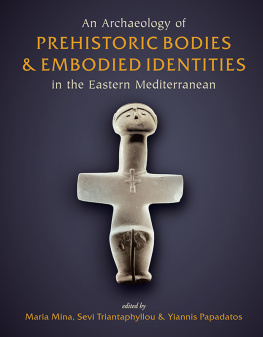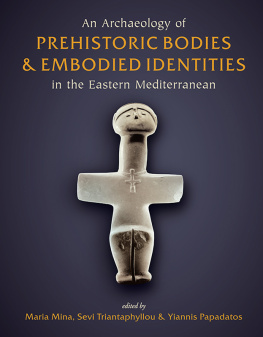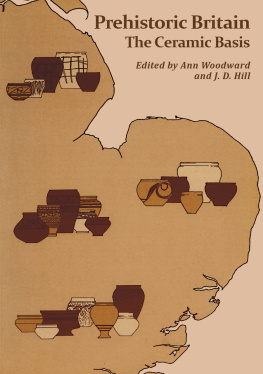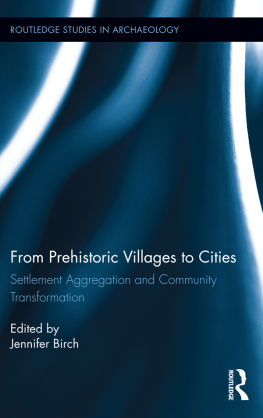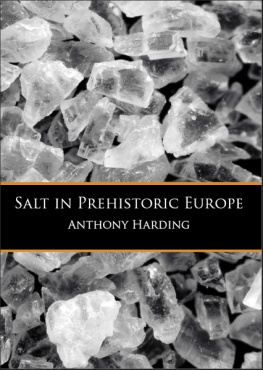Unearthing childhood
THE AUTHOR
Robin Derricourt received his MA and PhD in archaeology from the University of Cambridge. His career has included appointments as a university lecturer in archaeology, as a director of a national heritage commission, as an archaeology publisher and the director of a university press. He is a Fellow of the Society of Antiquaries of London, a Fellow of the Australian Academy of the Humanities and an Honorary Associate Professor in the School of Humanities, University of New South Wales.
His previous books include Inventing Africa: History, Archaeology and Ideas (2011) and Antiquity Imagined: The Remarkable Legacy of Egypt and the Ancient Near East (2015).
UNEARTHING CHILDHOOD
Young lives in prehistory
ROBIN DERRICOURT
MANCHESTER UNIVERSITY PRESS
Copyright Robin Derricourt 2018
The right of Robin Derricourt to be identified as the author of this work has been asserted by him in accordance with the Copyright, Designs and Patents Act 1988.
Published by Manchester University Press
Altrincham Street, Manchester M1 7JA
www.manchesteruniversitypress.co.uk
British Library Cataloguing-in-Publication Data
A catalogue record for this book is available from the British Library
ISBN 978 1 5261 2893 5 hardback
ISBN 978 1 5261 2808 9 paperback
First published 2018
The publisher has no responsibility for the persistence or accuracy of URLs for any external or third-party internet websites referred to in this book, and does not guarantee that any content on such websites is, or will remain, accurate or appropriate.
Typeset in Warnock Pro by R. J. Footring Ltd, Derby
CONTENTS
Every effort has been made to obtain permission to reproduce copyright material, and the publisher will be pleased to be informed of any errors and omissions for correction in future editions.
JOURNAL
| CitP | Childhood in the Past |
SINGLE-AUTHOR BOOKS
Baxter, Archaeology J.E. Baxter, The Archaeology of Childhood: children, gender and material culture, Walnut Creek, CA: Altamira, 2005
Lancy, Anthropology 1ed, 2ed D.F. Lancy, The Anthropology of Childhood: cherubs, chattel, changelings, Cambridge: Cambridge University Press, 1st edition 2008; revised and extended as 2nd edition 2015
Lewis, Bioarchaeology M.E. Lewis, The Bioarchaeology of Children: perspectives from biological and forensic anthropology, Cambridge: Cambridge University Press, 2007
Wileman, Hide and Seek J. Wileman, Hide and Seek: the archaeology of childhood, Stroud: Tempus, 2005
EDITED VOLUMES
| AAA | W. Wendrich (ed.), Archaeology and Apprenticeship: body knowledge, identity and communities of practice, Tucson, AZ: University of Arizona Press, 2012 |
| AOC | G. Cosunsu (ed.), The Archaeology of Childhood: interdisciplinary perspectives on an archaeological enigma, Albany, NY: SUNY Press, 2015 |
| BRIPP | K. Bacvarov (ed.), Babies Reborn: infant/child burials in pre- and protohistory, Oxford: Archaeopress, 2008 |
| CCLA | P. Romanowicz (ed.), Child and Childhood in the Light of Archaeology: studies, Wrocaw: Wydawnictwo Chronicon, 2013 |
| CCS | S.E.E. Crawford & G.B. Shepherd (eds), Children, Childhood and Society, Oxford: Archaeopress, 2007 |
| CIA | Children in Action: perspectives on the archaeology of childhoods, special issue of Archeological Papers of the American Anthropological Association 15(1) (2015) |
| CMC | J. Sofaer Derevenski (ed.), Children and Material Culture, London: Routledge, 2000 |
| CPPS | K.A. Kamp (ed.), Children in the Prehistoric Puebloan Southwest, Salt Lake City, UT: University of Utah Press, 2002 |
| CSI | M.S. Romero, E.A. Garcia & G.A. Jimenez (eds), Children, Spaces and Identity, Oxford: Oxbow, 2015 |
| HGC | B. Hewlett & M.E. Lamb (eds), Hunter-Gatherer Childhoods: evolutionary, developmental and cultural perspectives, New Brunswick: AldineTransaction, 2005 |
| IPP | J. Moore & E. Scott (eds), Invisible People and Processes: writing gender and childhood into European archaeology, London: Leicester University Press, 1997 |
| RLA | M. Lally & A. Moore (eds), (Re)thinking the Little Ancestor: new perspectives on the archaeology of infancy and childhood, British Archaeological Reports International Series 2271, Oxford: Archaeopress, 2011 |
| TCBI | J.L. Thompson, M.P. Alfonso-Durruty & J.J. Crandall (eds), Tracing Childhood: bioarchaeological investigations of early lives in antiquity, Gainesville, FL: University Press of Florida, 2014 |
| TCIN | G.E. Cunnar & A. Hgberg (eds), The Child Is Now 25, special issue of Childhood in the Past 8(2) (2015) |
I f time travel took us to visit a prehistoric community a small-scale farming village, perhaps, or a foraging band of early humans, or even earlier hominin ancestors what could we expect to encounter? Mothers playing with their infants (grandmothers too), small children breaking off from their play to look at us (or running off in fear), older children learning and practising the skills which will make them full contributors to their society; more confident adolescents would perhaps be off with their elders hunting or fishing or herding or tending the fields. We could expect about half the community to be the young; in the home base (whether a temporary campsite or a permanent village) they might form the majority during the day.
This book surveys what we know and can learn about the lives of children in the societies that preceded the emergence of civilisation: the world of prehistory. While we cannot yet write a comprehensive history of prehistoric childhoods, the information derived from archaeology and associated studies shows there is much to reveal of the hidden half of past humanity.
In the broad sweep of historical evidence, as in descriptions of more recent societies, we see that children represent around half of most human groups. It is reasonable to suggest that in our deeper prehistoric past also, only one of every two members of a community was an adult. We learn and acquire our culture, knowledge, skills and beliefs during childhood and when we are adults we pass them on to our own children and our grandchildren, and establish that continuity we call society, the human world. Children reflect and absorb tradition: culture in the broadest sense. The young may also feature as agents of change: as populations grow, it may be the young adults who question and innovate, and who shift their residence, making those movements in settlement which brought Homo sapiens to occupy and dominate the globe.
Despite their numbers and importance, children have been significantly under-represented in narrative accounts of the past. Although social and behavioural sciences pay substantial attention to the young, their presence in the work of historians has been a specialised if not marginal area. And archaeologists, especially those working on prehistoric societies (those without written records), have given relatively little attention to children and childhood. Most of their colleagues in social and cultural anthropology


